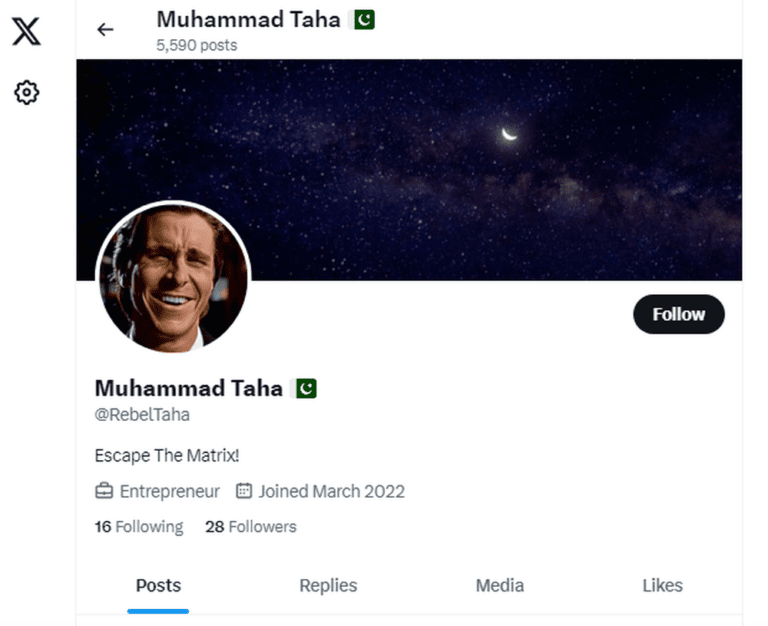Hamas has launched a sophisticated cyber-war against Israel aimed at spreading lies and gathering valuable intelligence, say experts.
The terror group behind last Saturday’s brutal massacres, rocket attacks and abductions is also coordinating a massive online campaign.
It is using an estimated 30,000 fake accounts on X (formerly Twitter), TikTok and other social-media platforms to churn out disinformation on an industrial scale and to gather sensitive details about its targets.
Cyabra, a social media threat intelligence company based in Tel Aviv, used its machine learning software to analyze two million posts, pictures, and videos in the immediate aftermath of the attacks.
It found that over a fifth of those accounts were fake. They were “bots” set up to generate and spread a mix of half-truths, outright lies and distortions.
In some cases they use pictures and videos that are entirely fake (from another conflict, another country), in others the content they present is genuine, but entirely out of context.
Their aim is to boost support for Hamas’s action inside Gaza, and to cynically manipulate a global audience.
Fake compassion
One example, deliberately written in broken English, claims to depict Hamas showing compassion to its captives.
The post reads: “Palestinians soldiers: No one harm the Jewish woman protect her. She has kids we are people of humanity we knows the value of human not like apartheid regime of Israel.”
It’s accompanied by a carefully edited video of a terrified woman and two young children. It has more than 283,000 views.
Another fake profile, @RebelTaha, posted 616 times in the two days since the attack – equivalent to a tweet every three minutes — promoting Gaza, comparing its plight to Ukraine, and reaching over 170,000 accounts.
This level of online activity requires huge planning and resources – hundreds of people and tens of millions of dollars.

It is not an add-on to Hamas’s bloody offensive, but rather an integral part through the many months or even years of planning for this war, according to the company.
“There is a lot of money involved, and a lot of paid promotion within the social platforms themselves, of horrific content, lies, semi-lies and altered pictures and videos,” says Dan Brahmy, CEO of Cyabra.
“It is clear that hundreds and hundreds of human beings are sitting behind their desks, typing on their keyboards, doing terrible things and propagating as much as they can.”
Informational chaos
Brahmy says it’s not clear whether they’re based in Gaza, in Iran – which sponsors the violence – or elsewhere, because his company tracks the activity, not the IP addresses. But he says the scale of what’s happening is unprecedented.
“We’re not fighting general negativity and criticism of Israel here. We’re fighting fake accounts that are being created in order to try and mislead. And the volume of content created by fake accounts has grown exponentially over the last two or three days,” he tells ISRAEL21c.

“There are thousands of fake accounts that are all pushing the same message with the same written content, the same links, and even the same hashtags and videos. This is by far the largest-scale propaganda and disinformation campaigns we’ve ever seen.”
That’s a worrying claim, from the company that was hired by Elon Musk to uncover bots on Twitter, that has battled vaccine disinformation and corporate impersonation, and that is currently tracking election disinformation for the US State Department.
It’s also worrying, he says, because Israeli TV channels, CNN, BBC and the rest of the world’s media rely heavily on social media as a source of information.
“We, as human beings, have fallen in love with the ability to either share or consume content on social media. Media outlets rely on it, and terrorists rely on it. This is the infrastructure of informational chaos.”
Passing along information
Brahmy says half his 40 employees have been called up by the IDF to defend Israel. The other half is using Cyabra’s tech to track and combat Hamas’s campaign of disinformation.
“We see pictures and videos from two years ago, five years ago, and even from different countries that are being employed for the sake of showing either mercy towards kidnapped Israeli citizens, or to show completely different situations,” he says.
“We pass on information to security organizations inside Israel and beyond, because they can apply pressure, help identify and feed back intelligence.”
Cyabra is also in discussions with high-level officials in other countries and the management executive of social-media platforms.
“Social media is actually built around virality. Sometimes they don’t care whether something is real, bad or fake. They only care about the potential exposure to potentially snowball that it can create over time because their business model revolves around eyeballs,” Brahmy says.
Finding fake accounts manually is possible, but to do so at scale would be inconceivable. Cyabra has developed the machine learning capabilities to trawl billions of conversations taking place online and across social media, understand narratives, and uncover disinformation campaigns.
Don’t get duped
Brahmy is also warning people to be extremely careful about what information they disclose online. Hamas is not only spreading fake news, it is also duping social-media users into joining new groups and unwittingly providing seemingly insignificant details that are prized by terrorists.
“They will claim it as a win on social media if they can say ‘Now we know the phone number of X. Here’s the picture of X, or the email address of X.’ This is extremely dangerous,” he states.
“There’s an enormous amount of new groups and channels on WhatsApp and Telegram. Some of these groups are there for the sake of gathering information from innocent civilians.
“They pretend to be there for the sake of understanding where the kidnapped civilians or the injured guys are.
“But all they’re trying to do is actually to draw people into their informational trap. ‘Hey, can you show me pictures? Can you give me your address, your phone number, your email address?’ People need to be extremely careful.
“So when you look at Twitter or TikTok or Facebook accounts, look at previous activity before you share or before you comment. If you see a blank, and then you see 616 tweets in 48 hours, you know that something is off.
“If you look at the pictures, and you don’t see a human being, or if you look at the list of friends and something doesn’t seem right, don’t engage.”
For more information, click here.















